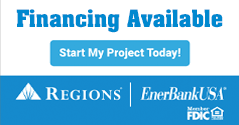What Technicians Look for During a Chimney Inspection
 Your chimney serves a very important function in ventilating smoke, soot and toxic fumes from your fireplace. And having it inspected annually not only ensures your fireplace is safe for use, but also helps spot minor problems before they grow to become expensive repairs or more importantly, a fire safety hazard.
Your chimney serves a very important function in ventilating smoke, soot and toxic fumes from your fireplace. And having it inspected annually not only ensures your fireplace is safe for use, but also helps spot minor problems before they grow to become expensive repairs or more importantly, a fire safety hazard.
Our chimney technicians cover a lot of ground when inspecting a chimney, but what they look for, depends on whether it’s a level I, II, or III chimney inspection, as defined by the Chimney Safety Institute of America (CSIA). So, let’s take a look at what we do for each of these inspections.
Level I Inspection
A level I inspection is the most common chimney inspection. It is a basic safety inspection and is the one we generally recommend unless you recently purchased your home or there have been recent repairs, changes, modifications or improvements to the fireplace or chimney.
During a level I inspection, the technician will:
- Visually inspect readily accessible portions of the interior and exterior chimney system including the flue.
- Look for any signs of obstructions, water leaks and soot and creosote accumulation.
- Inspect the condition of the brick work and/or masonry.
- Recommend any necessary repairs.
Level II Inspection
As you may have guessed, a level II chimney inspection is a bit more intensive. It is recommended if there has been any recent damage, repairs, upgrades or other changes to the structure or fuel system or have attached or replaced any components. For example, initially converting from a wood-burning to gas-burning fireplace will generally require a level II inspection. Also, a level II inspection is often required as a condition of the sale of a home.
During a level II inspection, the technician will:
- Perform everything in a level I inspection.
- Gain access to the attic, crawlspaces, roof and/or basement to inspect the entire chimney structure.
- Use video equipment and other tools to look for and document water leaks and other types of damages.
 Level III Inspection
Level III Inspection
Finally, a level III inspection is the most extensive. It is usually required when significant issues are uncovered or suspected during a level 1 or level 2 chimney inspection. For example, when water damage is discovered, and the source of the leak is not readily accessible, a level III inspection will be recommended to find the source of the leak.
During a level III inspection, the technician will:
- Perform everything in a level I and level II inspection.
- Remove components, like the chimney cap, flue lining, or portions of masonry, to enter areas of the chimney structure that are otherwise inaccessible.
- Look for major structural damages and safety hazards.
Due to the nature of chimney inspections, it is recommended it be performed by a certified technician. And along with the National Fire Protection Association (NFPA) and other fire safety experts, we highly recommend annual chimney inspections. Don’t delay, contact us to schedule your chimney inspection today!






